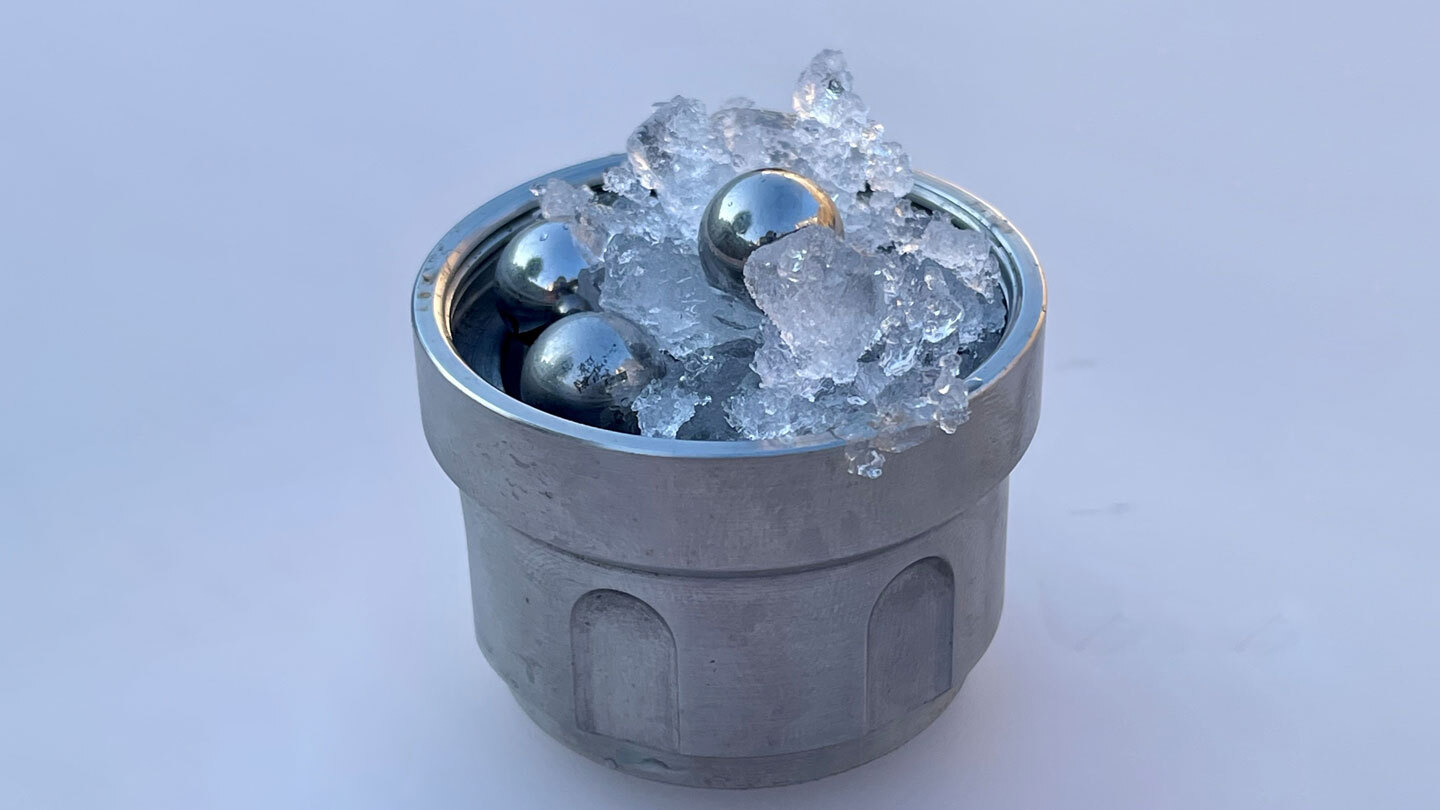Description

Disclaimer: Copyright infringement not intended.
Context:
- Scientists have created a new type of ice called Amorphous Ice that matches the density and structure of water.
.jpeg)
Amorphous Ice:
Amorphous ice (non-crystalline or "vitreous" ice) is an amorphous solid form of water.
Structure
- Normally, when water freezes, it crystallizes and its molecules are arranged into the familiar hexagonal, solid structure that we call ice. Amorphous ice lacks long-range order in its molecular arrangement.
Formation
- Amorphous ice is produced either by rapid cooling of liquid water (so the molecules do not have enough time to form a crystal lattice), or by compressing ordinary ice at low temperatures.
Presence
- Although almost all water ice on Earthis the familiar crystalline ice Ih, amorphous ice dominates in the depths of interstellar medium, making this likely the most common structure for H2O in the universe at large.
Types
- Just as there are many different crystallineforms of ice (currently more than seventeen are known), there are also different forms of amorphous ice, distinguished principally by their densities.
Formation
- Amorphous ice may be formed when liquid water is cooled to its glass transition temperature (about 136 K or −137 °C) in milliseconds to prevent the spontaneous nucleation of crystals.
- Pressure is another important factor in the formation of amorphous ice, and changes in pressure may cause one form to convert into another.
- Cryoprotectants can be added to water to lower its freezing point (like antifreeze) and increase viscosity, which inhibits the formation of crystals.

PRACTICE QUESTION
Q.Which of the following statements are correct in reference to Amorphous ice?
- Amorphous ice may be formed when liquid water is cooled to its glass transition temperature (about 136 K or −137 °C) in milliseconds.
- Amorphous ice is formed when water crystallizes and its molecules are arranged into the hexagonal lattices.
- Amorphous ice dominates in the depths of interstellar medium, making this likely the most common structure for H2O in the universeat large.
Answer: 1 and 3 are correct.
Explanation: Normally, when water freezes, it crystallizes and its molecules are arranged into the familiar hexagonal, solid structure that we call ice. Amorphous ice lacks long-range order in its molecular arrangement.

https://indianexpress.com/article/explained/a-new-kind-of-ice-amorphous-solid-water-frozen-in-time-8426036/















